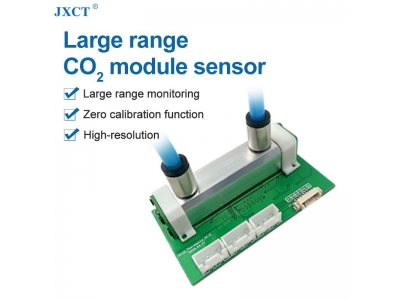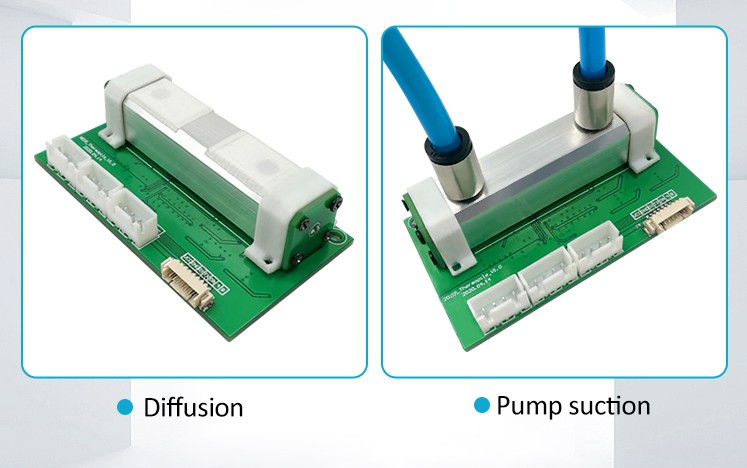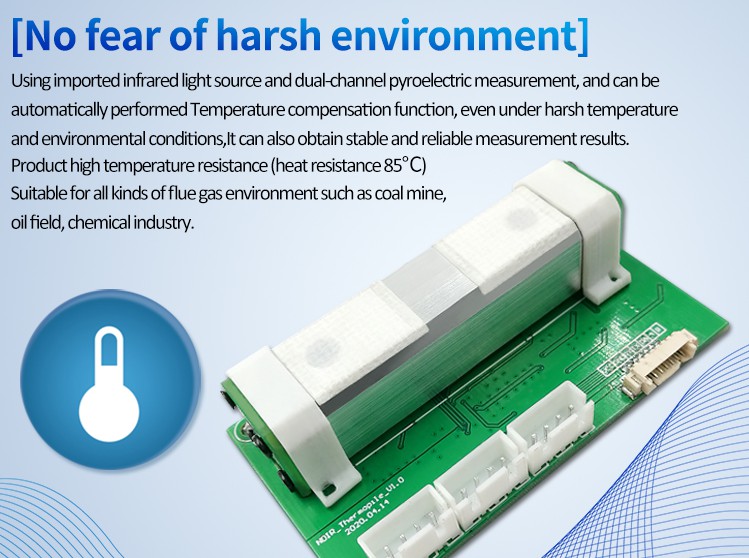
NDIR CO2 Sensor Revolutionizes Air Quality Control
This article discusses the NDIR CO2 sensor in detail, its benefits, and how it is transforming air quality control.

This article discusses the NDIR CO2 sensor in detail, its benefits, and how it is transforming air quality control.
Air quality has always been a concern for human beings, but in recent times, the issue has become more pressing. The increasing levels of carbon dioxide (CO2) in the atmosphere are causing major environmental problems such as global warming, climate change, and other ecological imbalances. This has led to the development of new technologies that can monitor and control the levels of CO2 in the environment. One such technology is the Non-Dispersive Infrared (NDIR) CO2 sensor, which has revolutionized air quality control. This article discusses the NDIR CO2 sensor in detail, its benefits, and how it is transforming air quality control.
NDIR CO2 sensor is a type of gas sensor that uses infrared technology to measure the concentration of CO2 in the air. It works on the principle of measuring the absorption of infrared light by CO2 molecules. The sensor consists of an infrared light source, a sample chamber, a detector, and an electronic circuit. When the infrared light is passed through the sample chamber containing the air to be tested, the CO2 molecules present in the air absorb some of the light. The detector then measures the amount of light absorbed and calculates the concentration of CO2 in the air.

NDIR CO2 gas sensors are widely used in indoor air quality control systems, HVAC systems, and other environmental monitoring applications. They are highly accurate, reliable, and stable, and can measure CO2 concentrations from as low as 400 ppm (parts per million) up to 100,000 ppm.
The benefits of using NDIR CO2 sensors for air quality control are numerous. Firstly, they are highly accurate and reliable, and can provide real-time data on the CO2 concentration levels in the environment. This allows for quick detection and correction of any anomalies in the air quality. Secondly, they are easy to install and operate, and require minimal maintenance. Thirdly, they are highly cost-effective and can be integrated into existing air quality control systems without the need for major modifications.
Another benefit of NDIR CO2 sensors is that they can be used to control the ventilation systems in buildings. By monitoring the CO2 concentration levels in the air, the ventilation system can be adjusted to provide the right amount of fresh air to maintain a healthy and comfortable environment for occupants. This can lead to significant energy savings, as the ventilation system is not unnecessarily running at full capacity.
NDIR CO2 sensors can also be used to monitor the quality of the air in enclosed spaces such as offices, classrooms, and other public areas. This is particularly important in the current COVID-19 pandemic situation, where the quality of indoor air is critical in preventing the spread of the virus. By monitoring the CO2 concentration levels in the air, it is possible to determine if the air in a room is being circulated adequately and if the ventilation system is functioning properly.

The NDIR CO2 sensor has numerous applications in air quality control and environmental monitoring. Some of the major applications are:
HVAC Systems: NDIR CO2 gas sensors are widely used in heating, ventilation, and air conditioning (HVAC) systems to monitor the CO2 concentration levels in the air. This helps in maintaining a healthy and comfortable indoor environment for occupants and reducing energy consumption.
Indoor Air Quality Control: NDIR CO2 sensors are used to monitor the quality of indoor air in buildings such as offices, schools, hospitals, and other public areas. This helps in maintaining a healthy and comfortable indoor environment for occupants and preventing the spread of diseases.
Greenhouses: NDIR CO2 sensors are used in greenhouses to monitor the CO2 concentration levels in the air. This helps in optimizing plant growth and increasing crop yields.
Automotive Industry: NDIR CO2 sensors are used in the automotive industry to monitor the CO2 emissions from vehicles. This helps in reducing air pollution and improving the overall air quality.
Aerospace Industry: NDIR CO2 sensors are used in the aerospace industry to monitor the CO2 concentration levels in spacecraft cabins and ensure the safety and comfort of astronauts during space missions.
Industrial Process Control: NDIR CO2 sensors are used in industrial process control systems to monitor the CO2 concentration levels in the air and ensure worker safety.